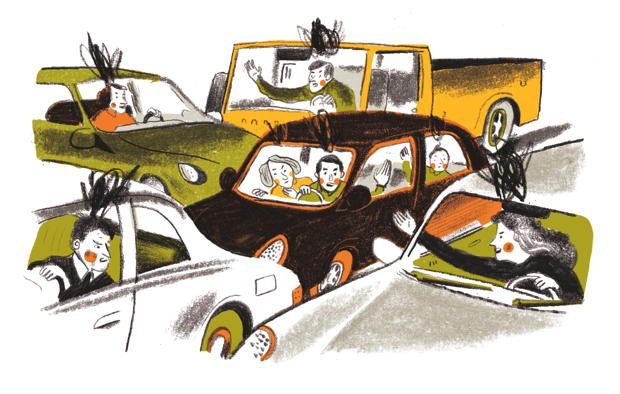
You may have seen something like this: Driver number 1 cuts in front of driver number 2. Driver number 1 didn’t even think to use the turn signal. Driver number 2 is fuming. Driver number 1 couldn’t care less. Driver number 2 flips into fury mode—tailgating, flashing brights, bashing the horn. Driver number 1 remains clueless. Driver number 2 pulls alongside driver number 1 and makes lewd and menacing gestures. Driver number 1 ignores the display. Driver number 2 jams on the gas, forces driver number 1 onto the shoulder, then speeds away.
It’s an extreme version of a sadly familiar scene—one you may have endured, or even perpetrated. In fact, 99 percent of New Jersey drivers in a recent poll by auto insurer Plymouth Rock Assurance said they have witnessed at least one road-rage incident.
Among other poll findings:
59 percent of those polled have witnessed drivers making insulting gestures at other drivers.
11 percent have witnessed a physical altercation between drivers.
45 percent are concerned about their safety while driving.
Most of us would like to think we manage our anger behind the wheel. But when tempers flare, the results can be tragic. In 2005, Hamilton native Daniel Robbins Jr., who was 19 at the time, lost control of his car and crashed into a telephone poll while speeding on the shoulder after a car that cut him off. Jessica Rogers, also from Hamilton, was riding in the back of Robbins’s small sedan and suffered a spinal-cord injury in the crash. Another passenger broke her jaw and fractured her pelvis. Robbins was found guilty of assault by an automobile and sentenced to six months in jail; he served only four. Rogers, now 25, is permanently paralyzed from the chest down. The accident inspired the 2012 legislation known as Jessica’s Law, which increased penalties for aggressive driving that causes serious injury, including a fine up to $15,000 and imprisonment for three to five years.
“The perpetrator got a pretty low sentence and I found that outrageous,” says state Senator Linda Greenstein (D-Plainsboro), who cosponsored the bill. She describes the new penalties as “proper punishment.”
It’s too early to judge whether the legislation has decreased incidents of aggressive driving. It certainly hasn’t stamped them out. As recently as August, a Trenton man driving a sedan on Route 129 hit a pickup truck from behind, got out of the car and attacked the 71-year-old driver. The sedan driver was charged with aggravated assault; the case is under investigation, and further charges may be filed.
Officials cite high volume on Jersey roads—especially during commuting hours—as a root cause of road rage. “In any state or metropolitan area with densely populated roads, the number of incidents of road rage may be higher,” says Lieutenant Brian Polite of the New Jersey State Police.
Polite suggests drivers allow more time to get to their destinations, since road rage often occurs when drivers are in a rush. “Aggressive driving is one of those things that breeds itself,” says Polite. “The instinct is to challenge or follow that aggressive driver, but the best thing to do is get out of their way.” If you feel someone is a danger, call 9-1-1. ”Don’t take the law into your own hands.”
